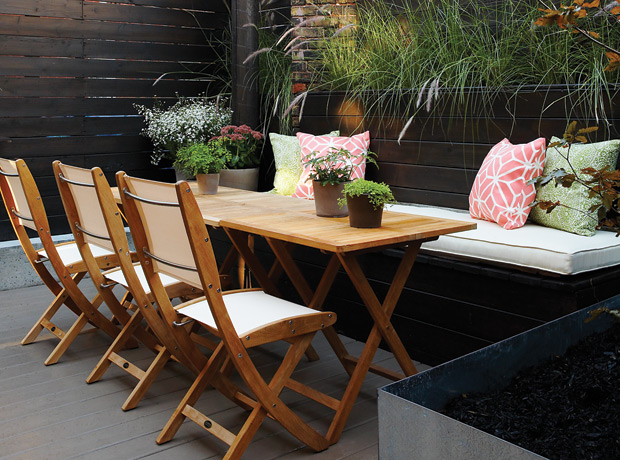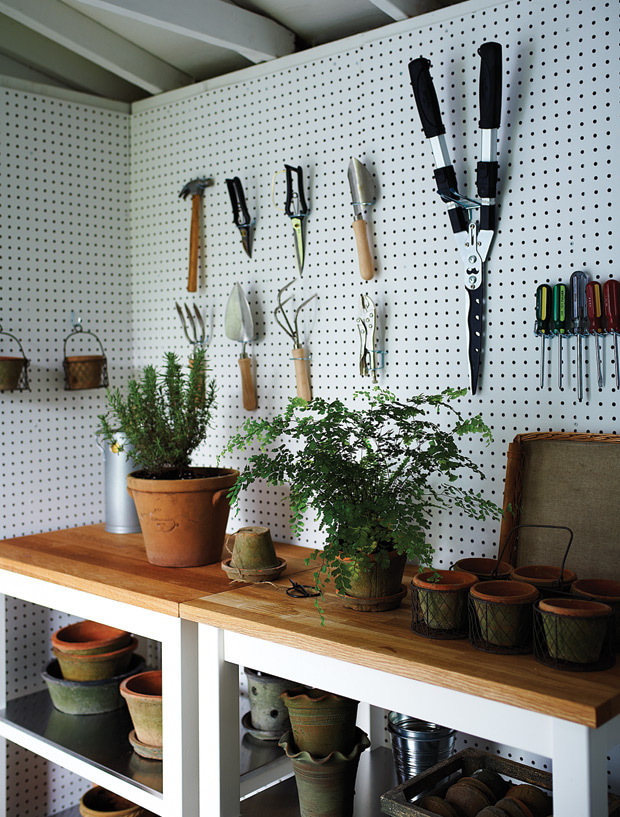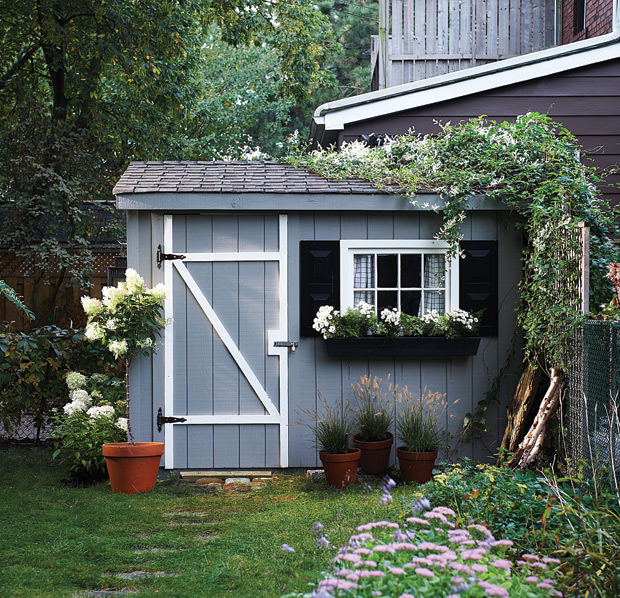Decorating & Design
July 30, 2015
What Are My Options For Outdoor Storage?

Whether your outdoor space consists of a balcony, a patio or a large backyard, effective storage for tools, pots and other garden miscellany is a must. The dream? Storage units, large or small, that keep contents close at hand for easy access and out of the way when not in use. Here are three attractive storage options to keep supplies both in their place and out of sight. Happy organizing!
Tight Spots

When space is at a premium, garden elements combining form with more than one function are invaluable. One of the best investments: a hollow wooden storage bench that provides both seating and hidden storage in a single neat package you can tuck into any corner. Although sizes can vary, a standard storage bench typically measures 46” long by 18” deep, making it suitable for hand towels, flowerpots, cushions and toys.
When choosing a storage bench, opt for one with a huge lid for easy access to the interior. Top it off with on long seat cushion that also lifts away easily.
Tall Orders

For a unit combining valuable storage space with a versatile work surface, choose a potting bench with low shelves, a few drawers, a work surface with or without a soil bin and some upper shelves for storing and displaying small items.
Measuring about 60″ high by 45″ wide by 25″ deep, the average potting bench serves as a vertical, more flexible alternative to a single-compartment storage bench. Choosing one with doors across the lower shelves will ensure items such as bags of soil, large pots and toolboxes are concealed from view. Keep supplies like small tools, garden gloves, seed packets and plant tags in the drawers. On the exposed upper shelves, store or display heirloom pots, baskets and other visually attractive items.
Living Large

On larger properties, a garden shed offers innumerable advantages. Although, sheds come in a variety of sizes, smaller models generally offer 150 to 200 cubic feet of storage space, while larger versions can provide 250 to 400 cubic feet of space. Before deciding on the size for you, think about the shed’s intended uses and itemize what will go in it. Don’t forget to consider all seasons. If you’re going to store furniture during the winter as well as tools and equipment all year long, for instance, a larger model is best.
In terms of styles, sheds encompass everything from shingle roofs and channel siding to stable-style doors, glass windows and cupolas. When evaluating appearance, consider how the shed will relate to both the house and the yard. They don’t have to match, but colors, building materials and architectural styles should complement the house.
1. Michael Graydon, House & Home April 2012; 2. Michael Graydon, & Home July 2012; 3. Michael Graydon, & Home July 2012
House & Home Decorating 101
1. Gillian Green; 2. Stacy Begg; 3. Stacy Begg

